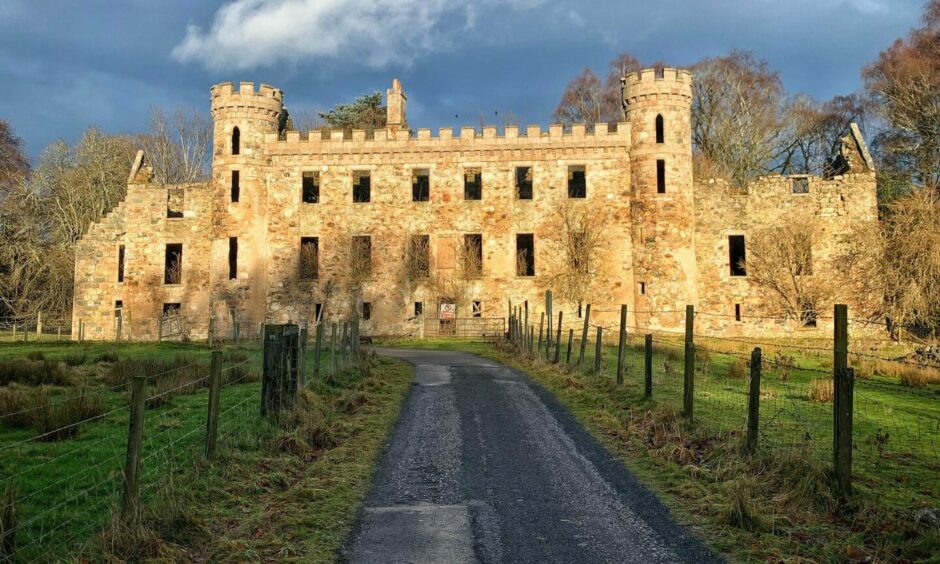
Fetternear House is one of Aberdeenshire’s most striking but precarious ruins – its tall burnt-out shell of empty windows and castellated turrets makes it an arresting sight.
Fetternear was completely gutted by a mysterious fire, which destroyed the mansion in just three hours days before Christmas in 1919.
The seat of Clan Leslie, the family and their servants – some jumping from windows – escaped, but a rare collection of Chippendale furniture went up in smoke, and a pet cat perished.
Although a crumbling shell, so much detail remains of Fetternear House that you barely need to close your eyes to imagine the mansion being full of life and parties.
These days, it’s only sheep that inhabit the ruins, grazing on once-manicured lawns.
Fetternear House has medieval roots
Considered one of the finest baronial mansions in Aberdeenshire in its heyday, Fetternear‘s history stretches much further back to medieval times.
Sometimes referred to as the Bishop’s Palace or Fetternear Palace, the site was originally a palace for the Bishops of Aberdeen built in the 1200s.
Extensive archaeological digs took place at the site in the late 90s and early 2000s, revealing trinkets and artefacts from the medieval period.
The lands belonged to the bishops until 1566 when Fetternear became the seat of the Leslie family, who extensively rebuilt and extended the medieval building.
A carved stone armorial panel depicting the Leslie coat of arms over the main entrance is the only hint that this was once a grand residence for a grand, established family.
Staircase immediately burst into flames
On the day of the fire December 19 1919, Lieutenant Colonel Charles Leslie, a Gordon Highlander, woke up a little earlier than usual.
With a few days to go until Christmas, Lt-Col Leslie’s daughter, her husband Col Forbes of Rothiemay, their three-year-old son Athol and his nurse were also visiting.
The family would have been looking forward to the celebration, and preparations at a house of Fetternear’s stature would have been well under way.
The kitchens would have been groaning with supplies for entertaining over the festive season, there was perhaps a Christmas tree in the drawing room, and gifts for the excited toddler.
Lt-Col Leslie was the first to raise the alarm. Usually out and about on Fetternear Estate by 6am, he rose earlier at 5am and noticed smoke curling under his bedroom door.
Waking his wife, he dashed into the corridor where he ran into the housekeeper Mrs O’Neil, who had been roused by dense smoke creeping through the floorboards of her room.
Racing through the house, the source of the smoke was quickly identified as a smouldering wood and coal cellar in the north basement.
But then, a fateful error was made.
The cupboard door was opened, and feeding the fire with fresh air, the staircase to the servants’ quarters immediately burst into flames.
Servants had to leap from windows
It was estimated that within two minutes the historic, tinder-dry woodwork of the servants’ stairs was alight from top to bottom.
The staff upstairs, still in their beds, were completely trapped for quarter of an hour.
A dramatic report in the Press and Journal the following day said: “When they were wakened and learned their position it was quickly recognised that their only hope of escape lay in jumping from the windows.”
Directed by the Leslies and Mrs O’Neil, the poor servants had to leap for their lives from their windows into the courtyard below – a frightening drop of 15-feet.
A terror-stricken maid, Mrs Emslie, had to be forcibly pulled from her bed and persuaded to jump to safety.
Falling and landing awkwardly, she dislocated her leg at the thigh – although the true extent of her injury was not realised until a doctor examined her the following day.
Her fellow domestics Doris Gardener, Barbara Davidson and Mary Spence all cleared the drop without incident.
Raging inferno was visible for miles around
Meanwhile, Mrs Leslie had roused her daughter, her infant son and his nurse Miss Cole who were asleep in the other wing of the house.
The four made their way out of Fetternear House safely, and into the cold, driving December sleet.
The P&J reported how the “plight of the residents and servants, wearing only their night attire was a sorry one indeed. Outside a hurricane was blowing, and showers of sleet and hail were falling”.
The Leslies and their staff were out of Fetternear House shortly after the alarm was raised, but the fire had already taken hold of the north end of their home.
The leaping flames fanned by the gales, it was apparent that any effort to fight the fire was futile.
But nevertheless, a band of loyal estate workers attempted to douse the inferno.
The raging blaze was visible for miles across the countryside, and seeing the glow among the trees, dozens of willing volunteers arrived from Kemnay within half an hour to help.
A ‘cordon of gaunt masonry’ remained
What started as a rescue operation, quickly became a salvage effort.
The fire was yet to envelope the south wing and the volunteers, led by Lt-Col Leslie, were organised into parties to save valuables.
This quick-thinking saw a £40,000 collection of paintings by the old masters – among them portraits by Kneller and Holbein – snatched from the claws of the fire which was tightening its grip on Fetternear.
Just as the last picture was removed from the corridor, the fire took a serious turn and in less than 30 minutes the south wing was gone.
The P&J reported: “Nothing could possibly have arrested this further outbreak.
“As the wind swept the flames down the the open corridor from the drawing room to the bedrooms beyond, first the interior of the massive corner turret, and then the roofs, gave way.”
By 8am, Fetternear House was gone.
All that remained was “a cordon of gaunt masonry around an accumulation of smouldering debris” before the great stone steps up to the turrets collapsed.
Cat refused to abandon kittens in fire
As daylight prevailed, the extent of the loss was apparent.
Only two months prior, Lt-Col Leslie had sold Hassop Hall, his Derbyshire Estate, and removed from there, to his home at Fetternear, one of the most valuable collections of Chippendale furniture known in Britain.
The rare collection was entirely lost, along with valuable silver stowed in a safe within the mansion’s 5ft-thick granite walls.
As well as a gargantuan 50ft-square Persian rug – a treasured Georgian heirloom commissioned for Hassop Hall.
As the flames dampened down it was discovered that a pet cat found crouching in the basement had perished.
Housekeeper Mrs O’Neil explained how she took the feline outside to safety, and no sooner had she done so, it ran back into the burning building.
Three times it was brought out, and each time it returned, until at last it went into the flames and burnt to death.
It transpired that, sadly, the cat had a litter of kittens in a basket beneath the burning stairs that it refused to abandon.
‘It was a pitiable situation’
Lt-Col Leslie had been invalided from France during WW1 with gas poisoning, and was overcome by the smoke fumes for a time while trying to fight the fire.
He estimated that the loss of Fetternear House probably cost in the region of £200,000, but he had nothing but praise for his brave staff.
He added: “It was a pitiable situation.
“We were dressed only in what we wore as we left our beds, and a driving shower of sleet made our misery worse as we stood there in the howling gale, watching it throw the flames higher and further over the house.
“If it had happened earlier in the morning, we certainly would not all have escaped.”
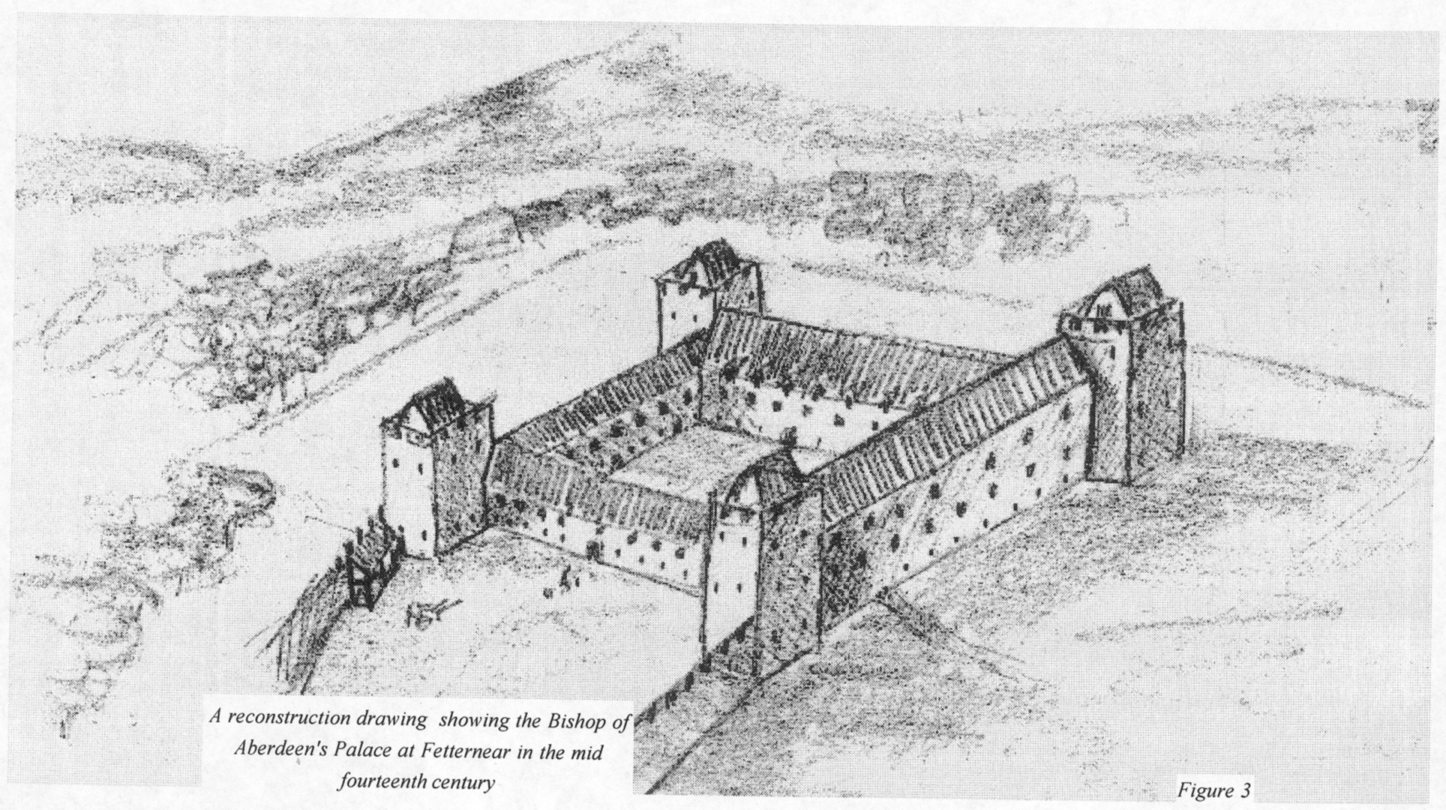
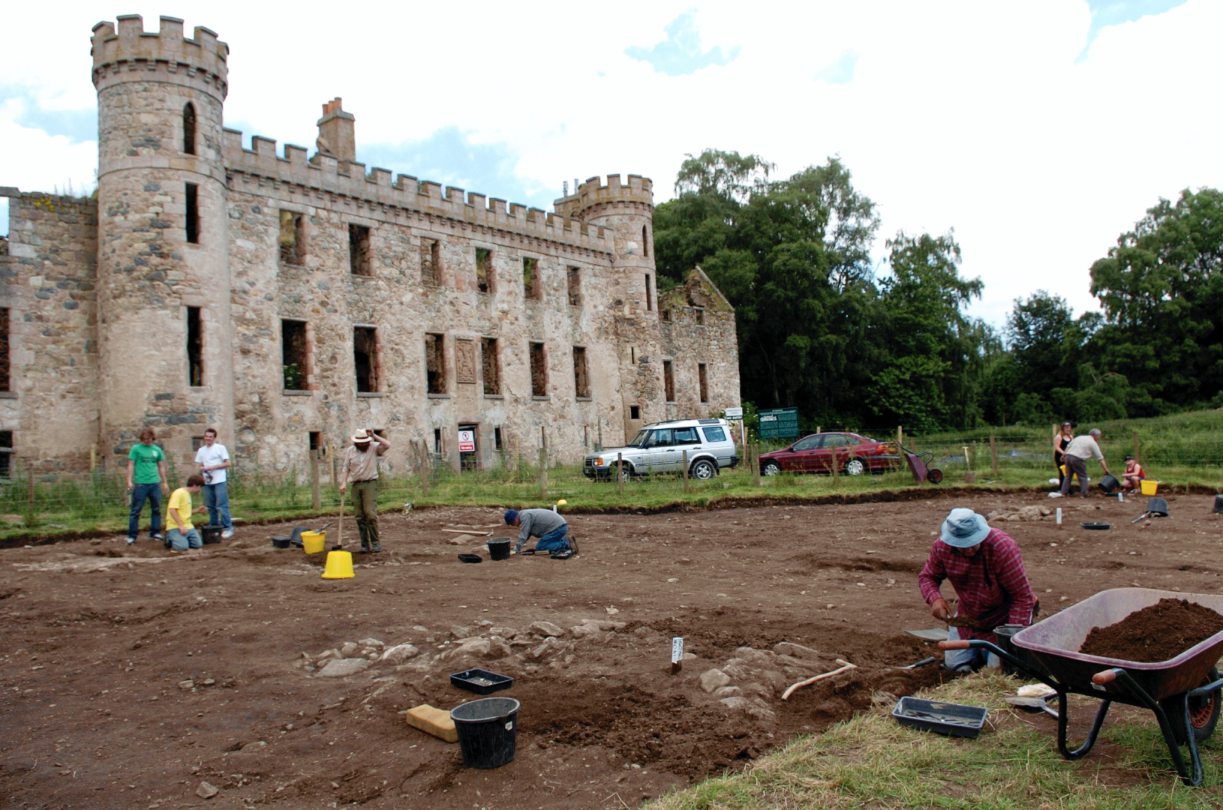
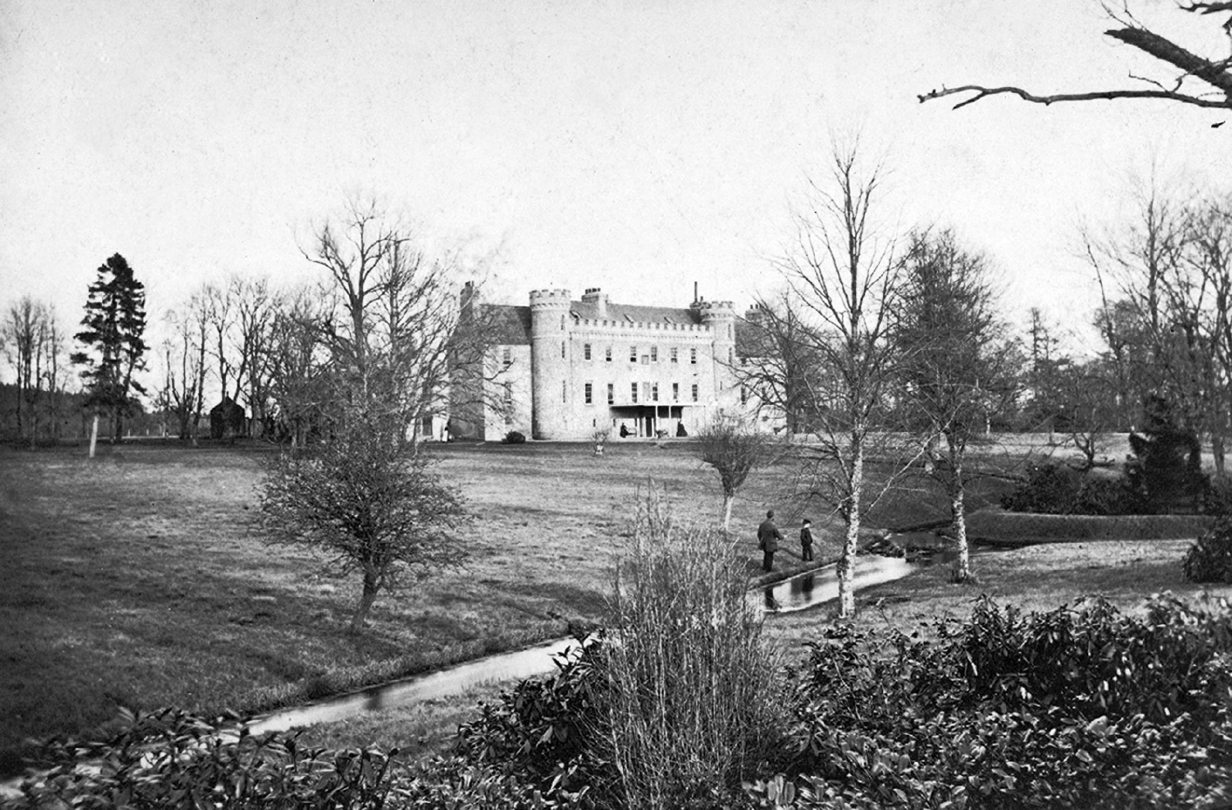

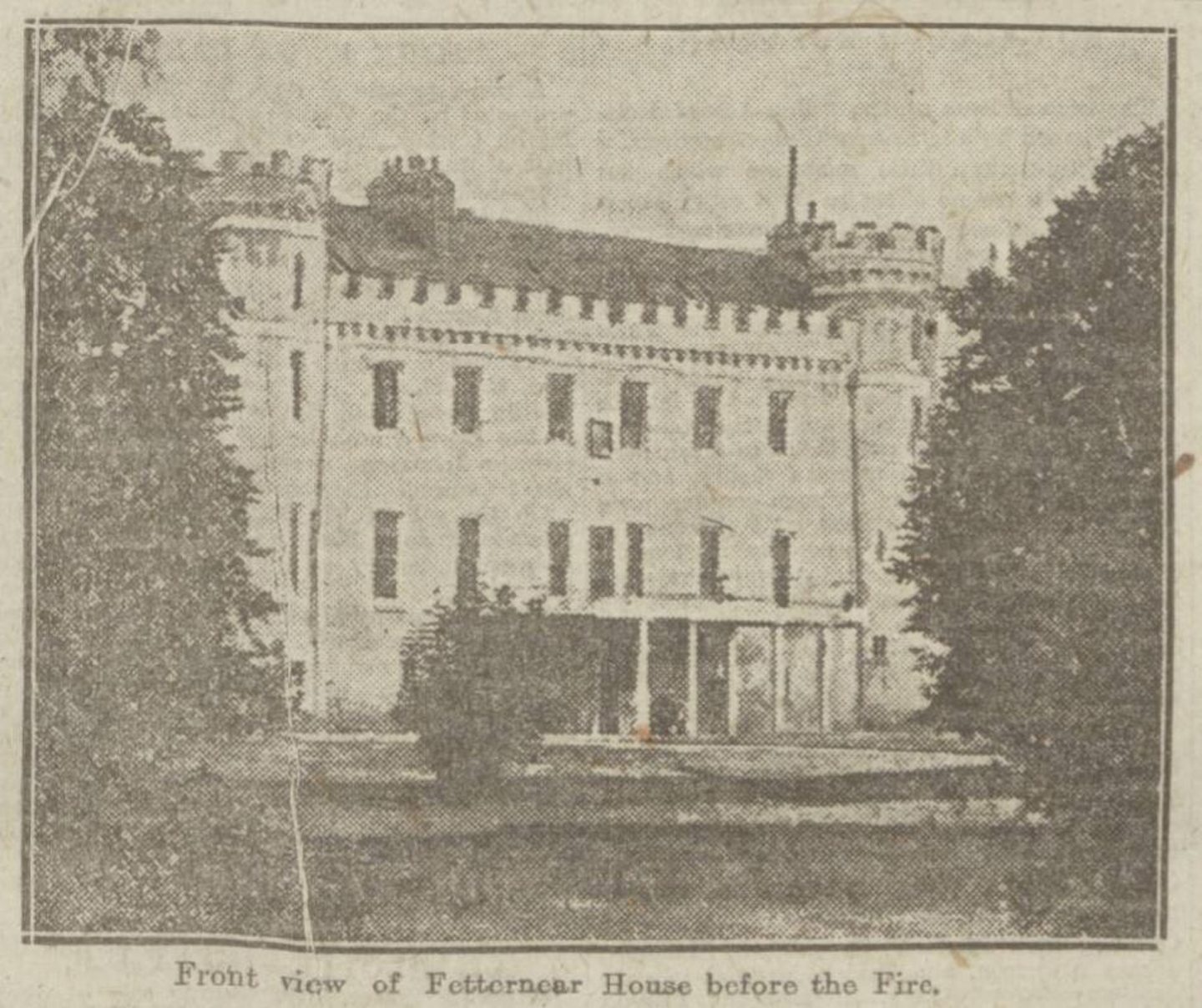
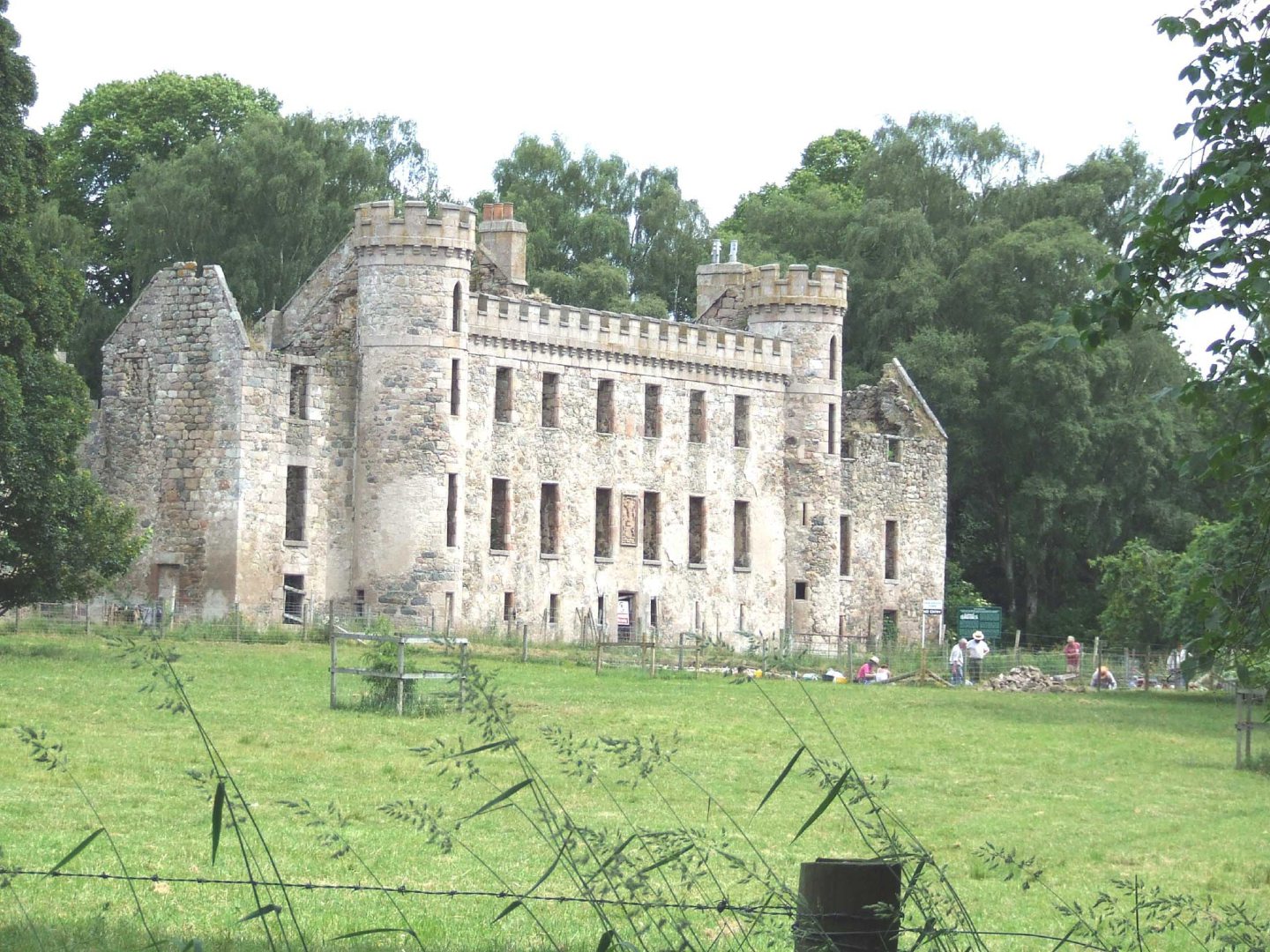
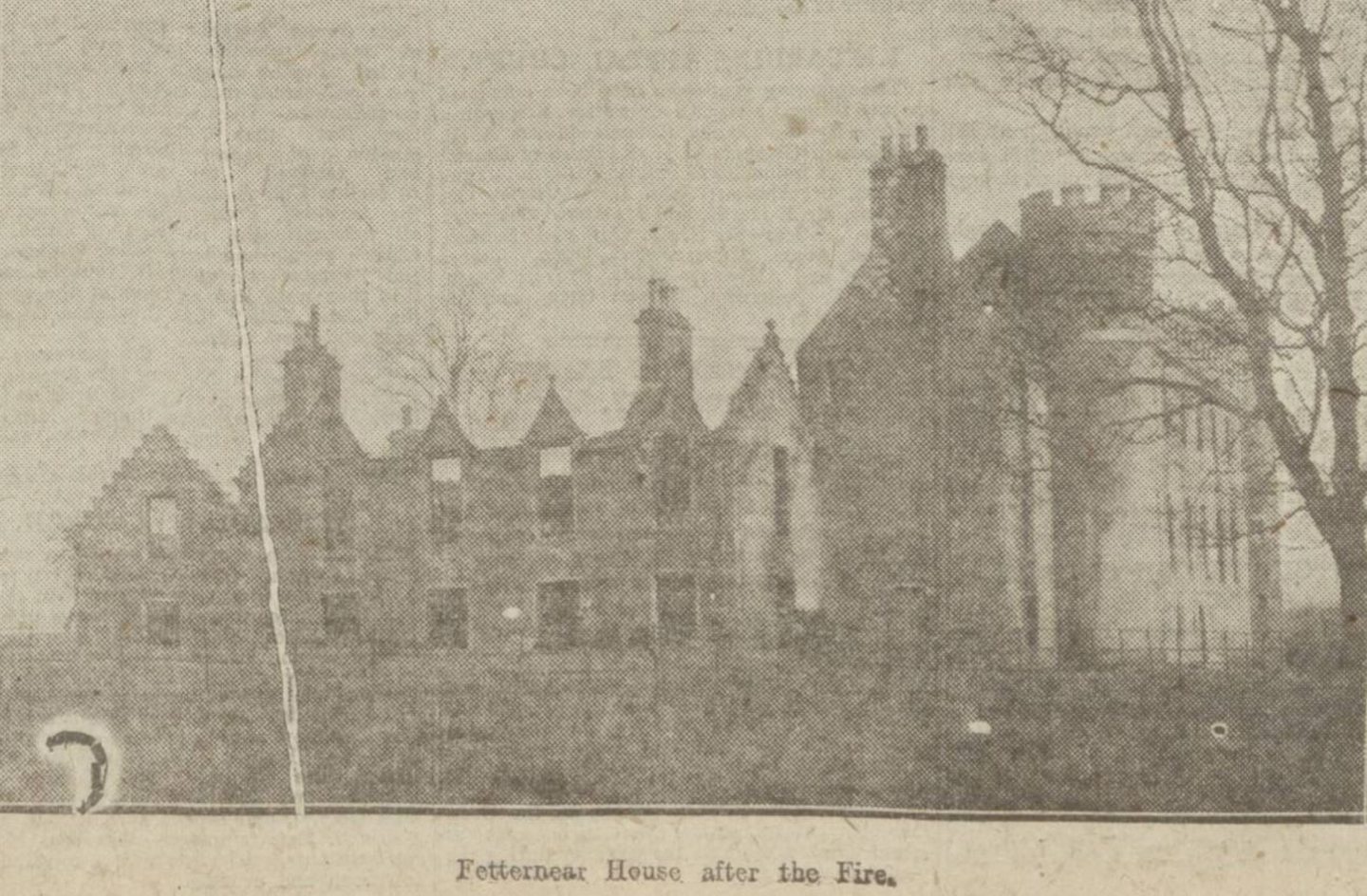
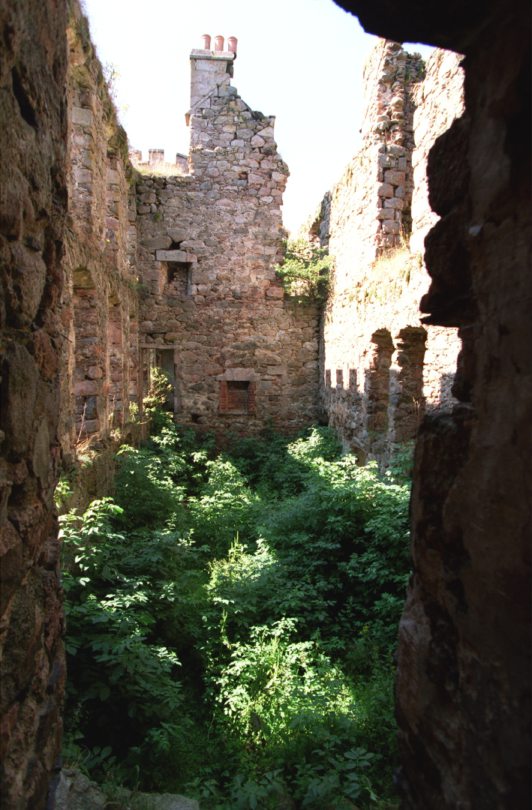
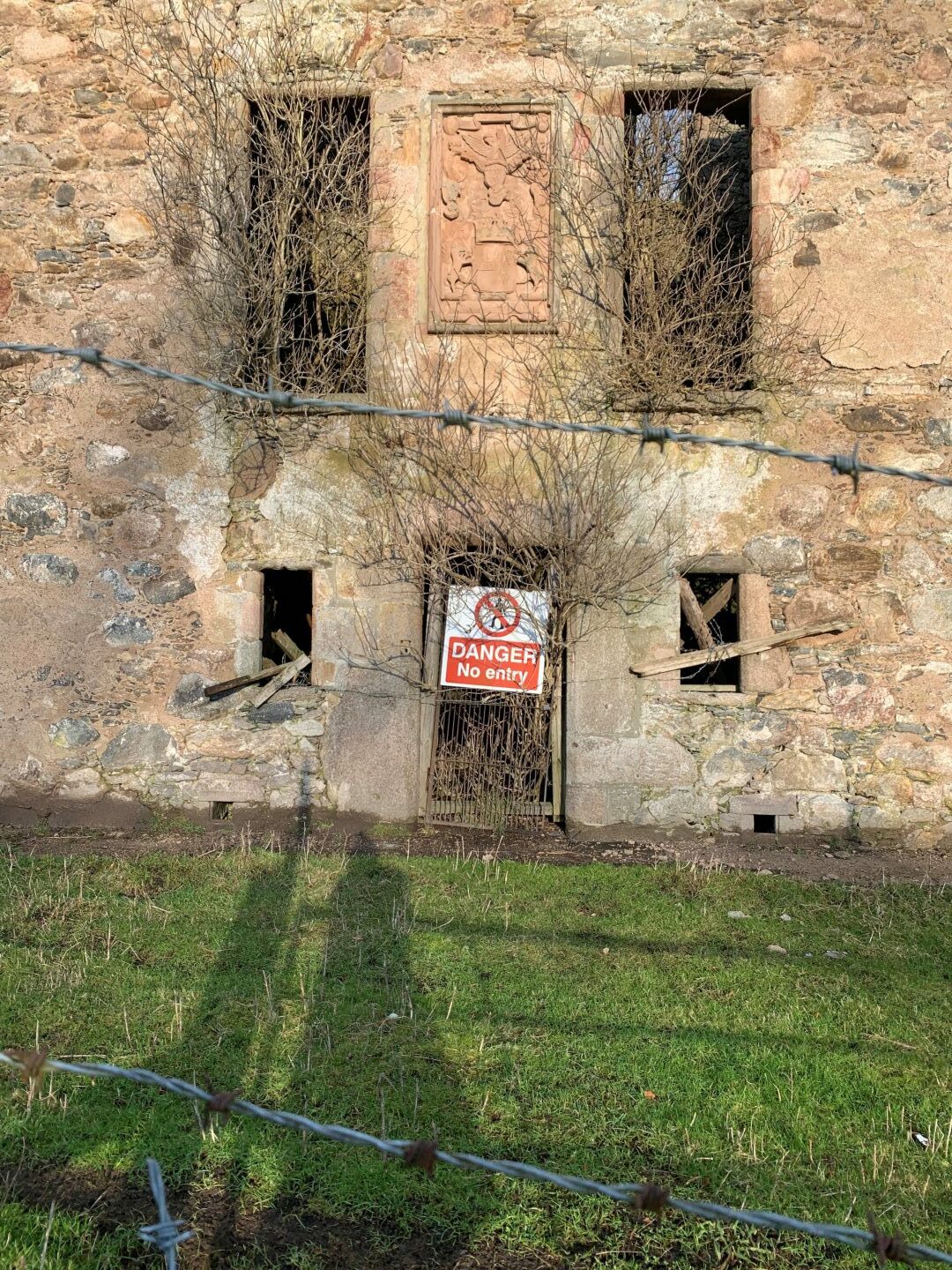
Conversation